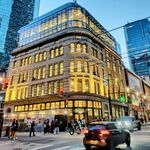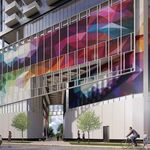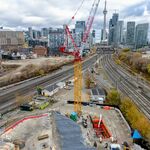Midtown Urbanist
Superstar
http://www.680news.com/2016/03/08/finch-west-among-five-most-dangerous-ttc-bus-routes-report/
Finch West bus route listed as most dangerous TTC route
Finch West bus route listed as most dangerous TTC route
This is beautiful. Getting off the highway and immediately having to turn left on Arrow is an absolute nightmare. I hate that off-ramp so much.They have listened and are making changes. For example, instead of one left turn from westbound Finch to southbound Arrow, they're putting in two left turn lanes.
View attachment 67968
And putting the bicycle lane into an underpass at the 400 southbound ramp from eastbound Finch.
^Isn't that article talking about the crosstown? It makes no sense to do a BRT there - it would force a transfer in the same direction at Mt Dennis.
Plus I'm not really sure why they'd be ok with a BRT but not an LRT since they're almost the same thing, just with different vehicles.
I think it would be great for the Finch let to head down to the airport and meet up with the ECLRT. Dunno if that means making one big sideways U or keeping them separate though - there might not be point in making them one line, I'm not really sure.
There is a lot in flux at the moment with the Finch LRT. Residents in the public consultation seemed to prefer a Bus Rapid Transit option (which they were promised would be considered), and I am working on a story at the moment about the TTC's expressed desire to examine linking the Crosstown W with the Finch LRT via the airport (and to finish the Crosstown E and W by 2021).
What would you all think of joining Crosstown W and Finch? What route would you think would work?

I think they seem to be stuck in the LRT are streetcars logic and that they tear up streets etc.
Kipling and Jane would act as a spine for Etobicoke, facilitating faster north/south travel within Etobicoke and to Eglinton Line, and Wilson/Albion, Steeles and Lawrence would serve trips east/west, primarily to University Line.
Jane is not in Etobicoke, and just one north-south separated transit ROW is not enough. Kipling should be the main spine, with a second one either on Islington or along the 27/427/Brown's Line corridor.

More seemingly irreparable damage by our late former mayor.
The Highway 27/427/Brown's Line corridor isn't served by any TTC routes. I don't think that would be a wise corridor for BRT, as there aren't many destination points that would be accessible by bus on that corridor




